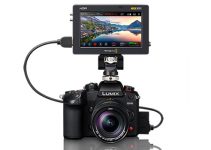New video editors all seem to ask the question: “What video editing software should I use?” Even some experienced editors are considering switching for one reason or another.
Perhaps they are curious about what happened to Final Cut Pro in the past decade, how DaVinci Resolve became a full-fledged NLE, or whether the subscription model is worth it for Premiere Pro. There is a lot to unpack.
Filmmaker Michael Tobin put together a great rundown video on the main three NLEs on the market, doing a deep dive on the greatest points of comparison. If you need help deciding on one, I highly recommend you watch the video.
First, everyone wants to know what’s the easiest to learn and use. Well, the good news is that non-linear editors all work in quite similar ways and they are all easy to learn.
The design language for editing software is basically decided at this point, though each does approach things in a slightly different way.
Inevitably, a major topic is the price. This one is actually very interesting as each takes a different approach. Apple is the most unique because they rely on their own App Store model.
Basically, you buy Final Cut for $299 – plus probably Motion and Compressor for $50 each – and that’s it.
You own it for life plus get free updates on all the computers tied to your Apple ID whether that is only one or one hundred. Keep it mind, this is the only Mac-only software on this list.
Blackmagic Design went with a standard license structure where you buy a license for $299 and can install it on two computers – plus there is a free version if you don’t need the more advanced features.
That’s amazing if you are just starting out and want to learn a bit before you invest. Blackmagic has also been providing major updates free of charge even adding major visual effects options and advanced audio editing directly into the software.
Adobe is the most expensive by far with a monthly subscription of $30 for just Premiere Pro or $54 for the Creative Cloud bundle, which is basically mandatory if you go this route.
That’s over $600 a year, every year. But, you do get Photoshop, Audition, After Effects, and everything else Adobe makes. It all tends to work well together with linking back and forth between the different programs. You can also only have it running on two computers at once.
Tobin then moves into the particular advantages of each NLE. Final Cut offers the best speed because it is so finely tuned for Apple hardware, there are tons of plug-ins available, and if you are interested there is ProRes RAW support.
Resolve has their own Blackmagic RAW format and native support, it works across Windows and Mac computers for better collaboration, and it is a single app with nearly everything crammed into it—organization, editing, Fairlight audio editing, Fusion visual effects, incredible color correction and tracking, and rendering.
Premiere doesn’t get much attention here, but it is basically the industry standard now and is a widely used and supported software with plenty of quirks.
Adobe did a good job with it and they do provide a good stream of updates. Plus, if you get the whole CC bundle – which you should – you will get all the other apps and access to some cloud documents and a huge font library.
The winner in Tobin’s eyes is DaVinci Resolve, though partially because he uses Blackmagic cameras and the extra support is beneficial. Though, he does point out that he jumps into Final Cut and Premiere for various reasons and projects as needed. Pick what you need for your purposes.
What NLE are you using?
Disclaimer: As an Amazon Associate partner and participant in B&H and Adorama Affiliate programmes, we earn a small comission from each purchase made through the affiliate links listed above at no additional cost to you.




